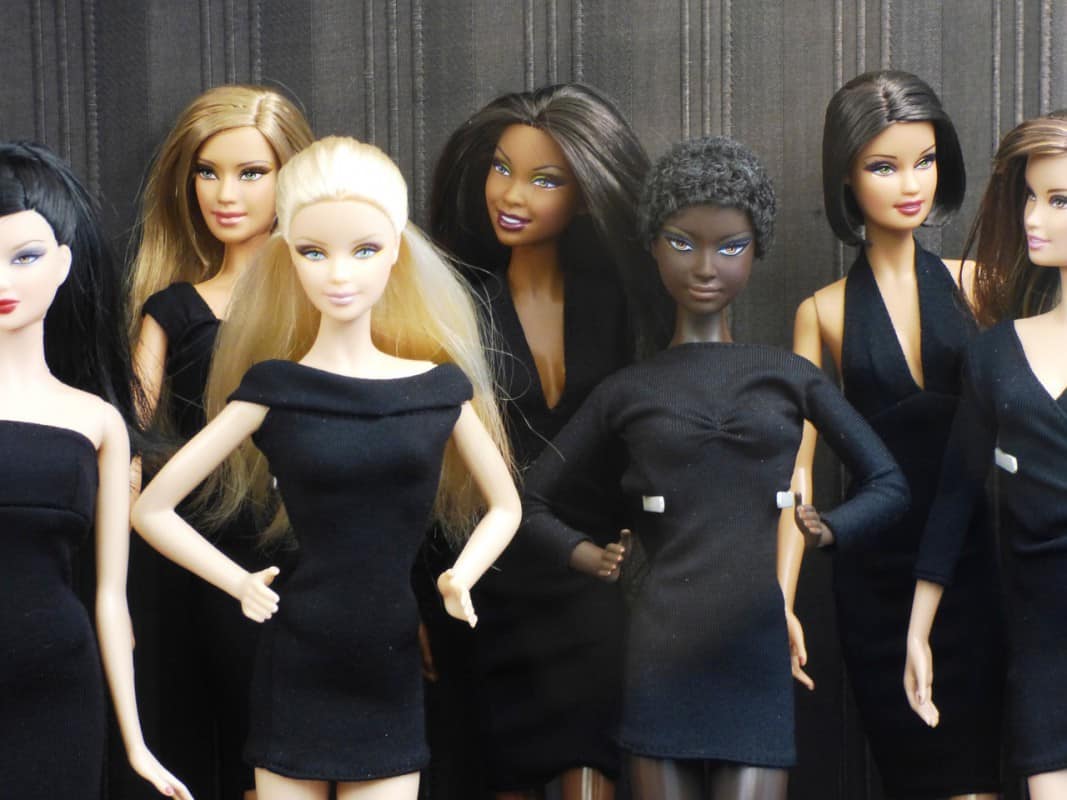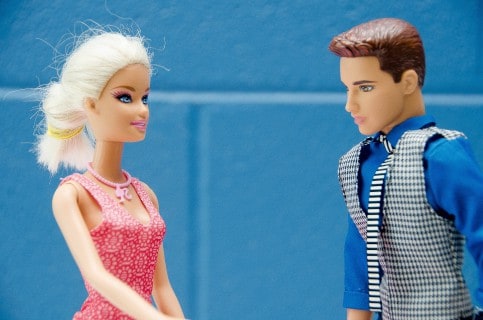Beyond the Oscars: Why Cultural Representation Matters

When the Academy Awards announced its nominees for 2015’s “Big Five” (best actress, best actor, best director, best picture, and best screenplay), the Academy completely leveled the little goodwill it had generated for minority nominations in previous years.
In recent years, its occasional (and occasionally problematic) nominations for minority-led films, such as the The Blind Side (2009), Precious (2009), The Help (2011), Beasts of the Southern Wild (2012), Selma (2014) and two awards – one for Slumdog Millionaire (2008) and another for 12 Years a Slave (2013) promoted the image that the Academy was at least trying to open up the Oscars to non-white films and audiences. In the announcements for the 2016 ceremony, however, no non-white films made it into the best picture category.
#OscarsSoWhite
Why has the Academy taken a step backward? When the nominations were announced for the 88th Academy Awards, critics and citizens of the internet excoriated the Academy using the hashtag #OscarsSoWhite. Few people offered to defend the Academy whole-heartedly, though some blamed it on the quality of minority films in the last year. But this excuse doesn’t carry much water, as the Academy has always had a hard time giving awards to people of color.
Even if the problem were film quality, there were certainly good work by people of color in 2015 (Michael B. Jordan’s performance in Creed being one notable example). The nominations give the impression that there were no people of color in films in 2015, as they are almost entirely missing. Only Alejandro G. Iñárritu, the Mexico City-born director of Birdman (2014) and The Revenant (2015), made it into the Big Five nominations. Straight Outta Compton (2015), about the rise of the hip-hop group N.W.A., barely squeaks in with a nomination for Best Original Screenplay.
When British actress Helen Mirren said “[i]t’s unfair to attack the academy” for the whiteness of the Oscars, many took her to be defending the awards ceremony. The Academy should be criticized – in 2013, the LA Times reported that 93% of Academy voters were white and 76% were male, and the numbers largely haven’t changed. But her larger point is worth examining: “The issue we need to be looking at is what happens to the film before it gets to the Oscars.” The decisions people are making in every step of the production process, in other words, are producing the whiteness of Hollywood’s films and awards ceremonies.
But #OscarsSoMale, Too
Mirren certainly isn’t wrong, and the issues in production affect both race and gender in film. Women are generally better represented than minorities at awards ceremonies, but they are still seriously underrepresented. When the focus shifts to minority women, the issues are even more dire. Halle Berry is still the only black woman to have won Best Actress (2001’s Monster’s Ball). Only nineteen black women have been nominated for Best Actress in a Supporting Role in the Academy Awards’ 88 years, and only six of them have won – with three of those wins occurring just since 2009.
Slow March of Progress
But take 2015, a particularly strong showing for women. Films like Brooklyn, Mad Max, Room, and Carol starred incredibly strong female characters. Star Wars VII: The Force Awakens (2015) gained a lot of attention for splitting screen-time between John Boyega’s Finn and Daisy Ridley’s Rey to almost two-hander levels. When the studio released an early table read photo, people responded forcefully to the film’s lack of female characters. Because of this backlash, J.J. Abrams changed the sex of two characters (Maz Kanata and Captain Phasma) to add more women to the cast (Oscar-winner Lupita Nyong’o and Game of Thrones’s Gwendoline Christie).
Not all of pop entertainment has had such a hard time achieving some sort of racial and gender equality. Most notably in the last year, the Broadway show Hamilton, which has won wide acclaim, casts people of color in the roles of white founding fathers. TV has also fared better with diversity in recent years. The number of female-led and minority-led shows still pales in comparison to white male leads, but progress has been significant. Recent shows like Black-ish (2014), Fresh Off the Boat (2015), The Mindy Project (2012), and Master of None (2015) allowed minority writers and actors to explore the particular issues they face that white male writers do not.
Minority men and women are not just relegated to the realm of comedy. Hollywood powerhouse Shonda Rimes has made women- and minority-led dramas her forte with shows like Grey’s Anatomy (2005), Scandal (2012), How to Get Away with Murder (2014). Recently Empire (2015), produced by Precious director Lee Daniels, has been a runaway hit with an entirely black main cast.
Female leads in darker fare, both comedic and dramatic, have proliferated in the past few years as well, in no small part to the Golden Age of premium television, which includes the likes of HBO, Showtime, STARZ, Netflix, and Amazon. Female comedians are at the forefront of the TV Renaissance with shows like Veep (2012), Inside Amy Schumer (2013), Broad City (2014), and Unbreakable Kimmy Schmidt (2015). Shows like Homeland (2011), Girls (2012), Outlander (2014), and Jessica Jones (2015) represent the breadth of roles available to women now.
But why does any of this matter?
Too many people take the answer to this question for granted, but “it just does” does not count as a reasonable answer in 2016. So let’s get specific. Representation matters enormously for essentially three main reasons.
Representation is a Moral Issue
It’s perfectly human that we have trouble relating to the experiences of others that we haven’t experienced ourselves. One of the most beautiful aspects of art is being given the chance to see the world as artists do. Because patronage is a factor for artists and those patrons, in the world of entertainment, want something they can invest in and expect a return, entertainment is shaped for a market.
This shaping of artistic products towards the biggest audience that will buy them effectively means, in a majority white, Christian, heterosexual country – where men make more money than women and therefore have more buying power – like the United States, those white, Christian, heterosexual men are the primary audience. We, as a society, cannot ignore the moral questions surrounding the exclusion of women and people of color (and LGTBQ) because they are not essential to the white male imagination.
If women, people of color, and other minorities are not worth our art, then we are saying they are not worth our attention. These people have innate value as human beings, and we cannot deny that value and humanity expression simply because a dominant demographic hasn’t learned to be interested. Art teaches through representation, and the art in our entertainment can teach us the value of other human beings if we have not come to recognize that value on our own.
Gender boundaries may seem like a less severe issue, but major efforts like those of the Geena Davis Institute on Gender in Media and other entertainment writers and watchdog sites show that gender parity is not an industry standard. In a survey of 122 major films in between 2006 and 2009, only 29.2% of 5,554 speaking parts were female. In fact, the Geena Davis Institute insists that “gender inequality on screen has remained largely unchanged and unchecked” over the last sixty years. In a country like the United States, where women compose a little over half of the population, such an “oversight” reinforces real world stereotypes that women are unable to be equal partners and earners to men.
Representation is a Political Issue
What we see and hear affects how we behave and what we think now. The trajectory of acceptance in America is directly correlated to the prevalence of representation. After Ellen DeGeneres came out on her show Ellen in 1997, ABC was only able to carry the show for one more season due to the backlash about Ellen’s lesbianism (both in real life and on the show). In 1998, NBC picked up Will & Grace, which lasted until 2006. The show survived by making its gay characters into broad, ridiculous stereotypes that were hard to take seriously enough to be offended by them, but the show has been credited with softening attitudes about gay and lesbian people.
Audiences often self-segregate; it is assumed that the audience for an all-minority cast will be itself all-minority. Community through entertainment is important, and all-minority casting is not a problem. In casting on major TV networks and in major movies, racial boundaries have proven extraordinarily hard to break down. Shows like All in the Family (1971-1979) cleverly indulged in Archie Bunker’s (Carroll O’Connor) bigotry as a backdoor way to force discussion of very real issues like racism, interracial relationships, women’s rights, rape, and more.
But All in the Family had to loudly acknowledge, talk about, and make fun of issues for them to be discussed. Guess Who’s Coming to Dinner (1967), a movie about an interracial couple, used drama to explore the explosive nature of interracial relationships. Only recently have interracial relationships begun to exist on screen without comment, which is truly the mark of acceptance: if race or interracial relationships are mundane enough not to deserve comment, then audiences can learn that those relationships are mundane in real life, too.
As more and more issues of gender, race, and sexuality become more and more mundane, they’ll stop being sensational and ease fears about these matters as they come up in day-to-day life.
None of this is to say that shows that confront the realities of gender and race in America are perpetuating a problem; shows highlighting sexism and racism are just as needed as the shows that treat women and people of color as equals. The issue is that these demographics cannot simply be left out of the conversation. Whether it’s through real appraisals of real problems or simply casting a character whose gender or race is not mandated by the script as female or black, we must make active decisions to address these issues if we are ever to fix them and see the dividends in the real world.
Representation is a Cultural Issue
What our children see and hear will affect how they behave in the future. If the effect for adults watching TV shows and movies that reduce once sensational topics like gender equality and race into a normal course of events is a slow but tangible change in attitude towards those topics in real life, then the effect for children would be even greater. What we watch teaches us a lot, and children are sponges for the messages they are receiving through media. Teaching children about the emerging “new normal,” where these issues are non-issues, can help to erase a lot of the barriers we have built up around ourselves over centuries in just a few generations.
Last modified on November 9th, 2016






Show Comments +